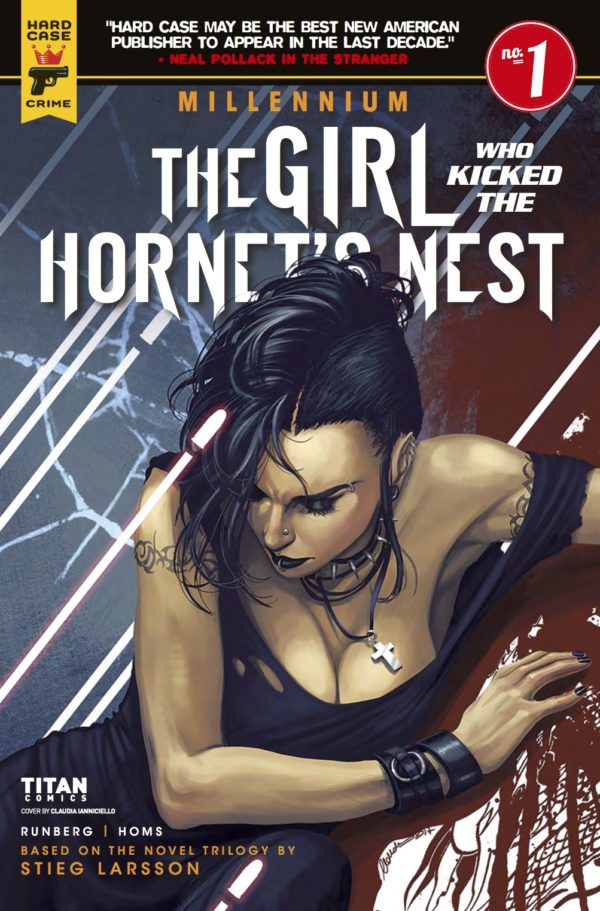Liam Hoofe reviews The Girl Who Kicked The Hornet’s Nest: Millennium #1…
Hard Case’s graphic novel adaptations of the Millenium trilogy have been, especially for fans of the original books, a joy to read. The first two entries in the series were excellent depictions of their respective novels and the final entry in the series The Girl Who Played With Fire gets off to a similarly encouraging start with its first edition.
This edition picks up where the previous one left off. Lisbeth is lying wounded in a hospital bed following the events of the previous book, Mikeal has now taken Lisbeth’s case to the local police to attempt to help clear her name, Lisbeth’s father is recovering in hospital from injuries caused by his daughter, Ronald Niedermann is on the run, and ‘The Section’ has been reinstated.
This edition of the comics covers the first few chapters of the titular novel, and while it misses out some plot points and doesn’t waste time speeding up some others (Lisbeth is out of the hospital very fast) it still manages to remain loyal enough to the source material to entertain fans of the series. What makes The Girl Who Kicked The Hornet’s Nest feel like a much different entry to previous editions is that it spends a lot of its time focused on shady backroom meetings and questionable characters; it’s a comic that feels as though it is establishing a much bigger act, one that is bringing together all of the key players for the grand finale. Those hoping for the violence depicted in the previous two books will be disappointed here, as this feels very much like an appetizer for the main course of the novel.
What The Girl Who Kicked The Hornet’s Nest succeeds with is creating an atmosphere, one that is rich with paranoia and fear. This, by and large, is down to the return to the series of the artist ‘Jose Homes’ who was absent from parts of The Girl Who Played With Fire. Homs’ depictions of the characters just feel so much more accurate than any other artist who has worked on the series, and he does an excellent job at really emphasising the differences between the character’s situations. Lisbeth’s panels are always so dark and full of dread, dripping in paranoia and Nordic Noir, they are in stark contrast to those of The Section, who clearly hard all the cards in this adaptation. It really gives the novel a feeling of social relevance, something that helps elevate this series above a lot of other adaptations. Mikeal, as well, feels much closer to what we picture from the novels, and his scenes, which are often dripping in sunlight, have a sense of hope to them. One scene, right near the end of the novel, sees Lisbeth speak to Mikeal and for the first time in the whole book, we see her character standing in the bright lights, it feels like a hopeful moment for her, and it’s effectively rendered.
Sylvan Runberg’s writing is also at a fairly high standard here. The final instalment of the trilogy is spinning a lot of plates, and while at times the comic, like the novel it is adapted from, can border on being slightly exposition heavy, Runberg does a solid job of keeping each character relevant and moving the whole narrative forward at a nice pace. The final scene where Lisbeth hands herself into the police is particularly well executed.
The Girl Who Kicked The Hornet’s Nest #1 does a great job of manoeuvring all the pieces into place for the trilogy’s final volume. It establishes a strong sense of atmosphere and features some of the finest artwork the series has seen thanks to the much-welcomed return of Jose Homes. While the narrative may, at times, feel a little exposition heavy, this is still a worthwhile read, especially for fans of the original trilogy.
Rating: 7
Liam Hoofe – @liamhoofe












